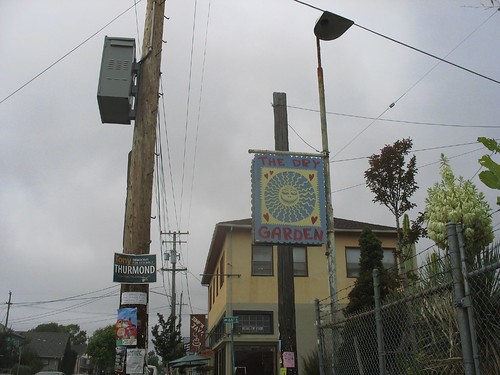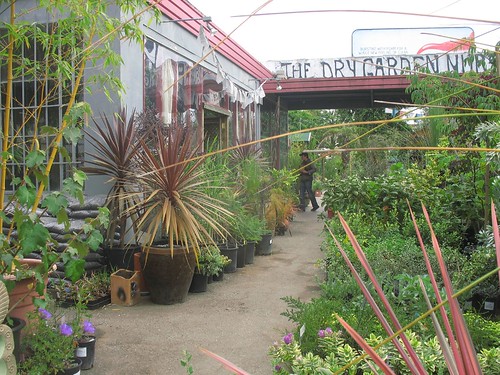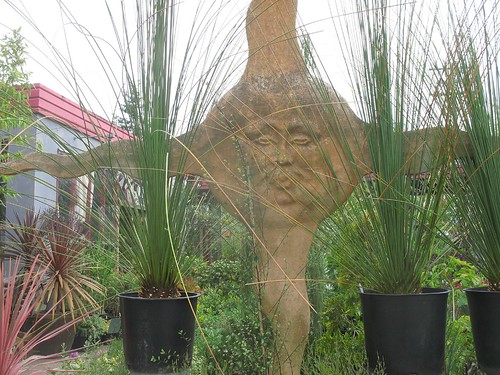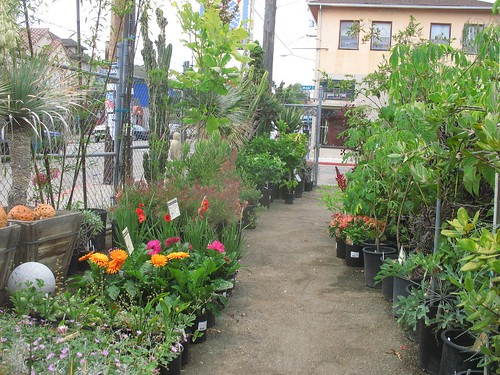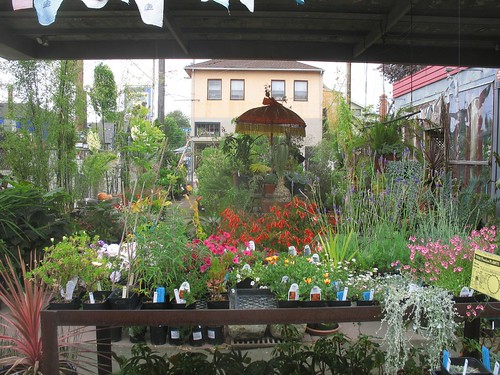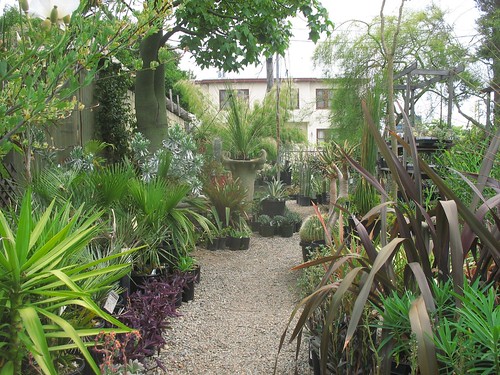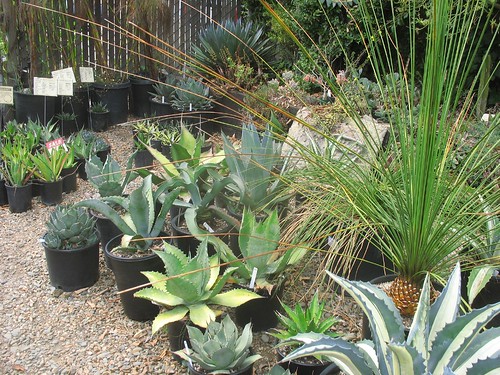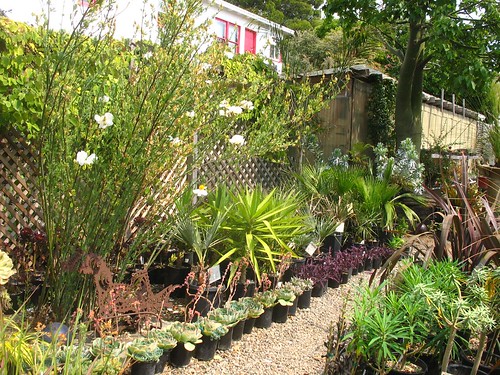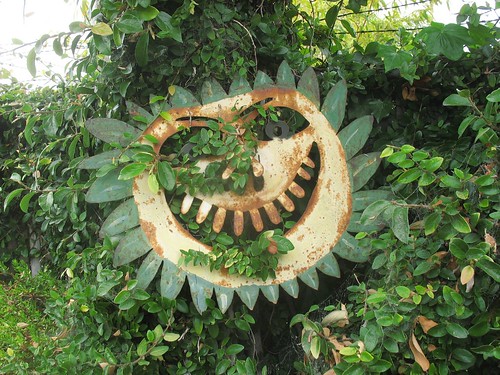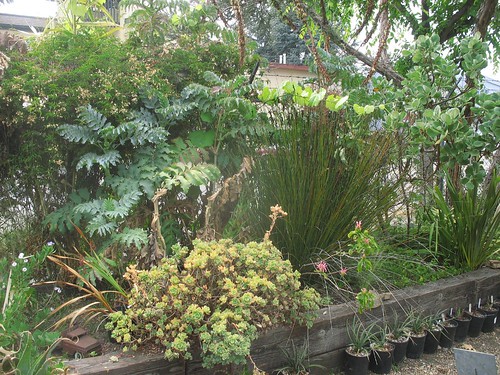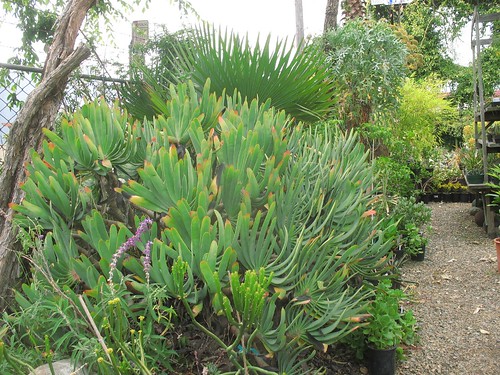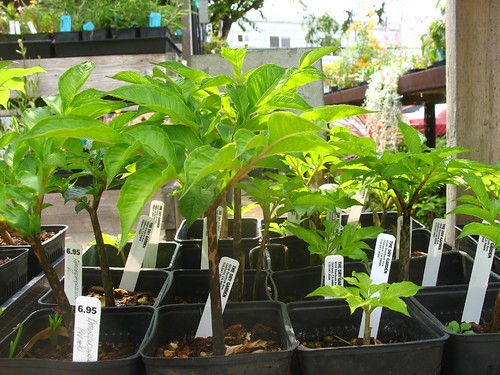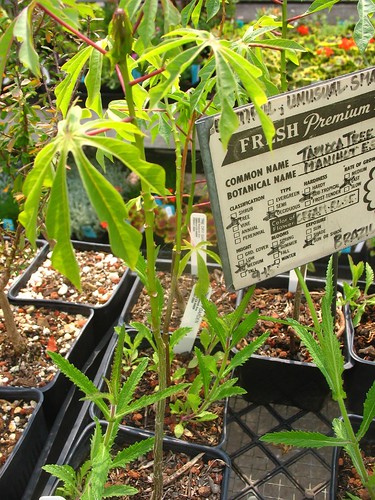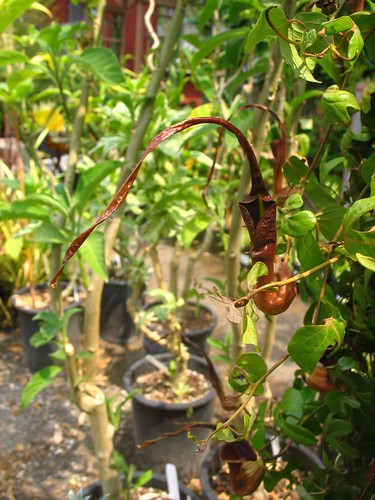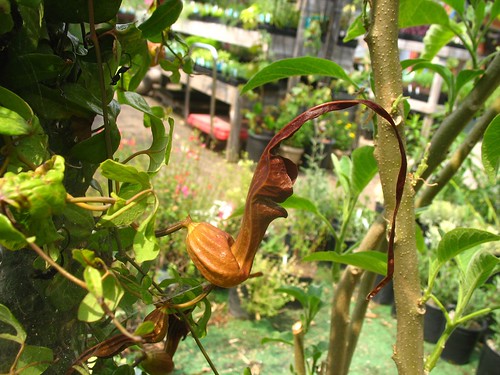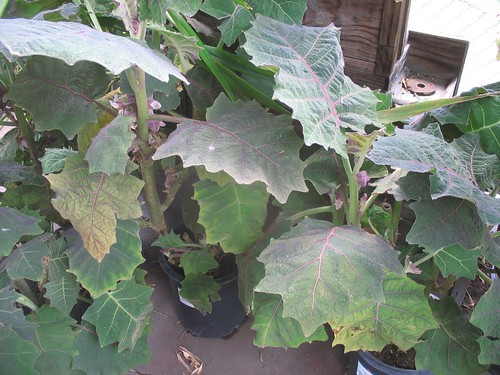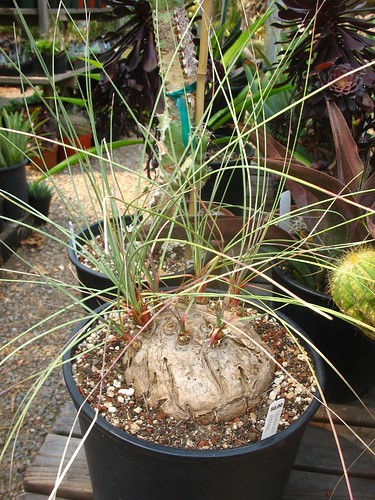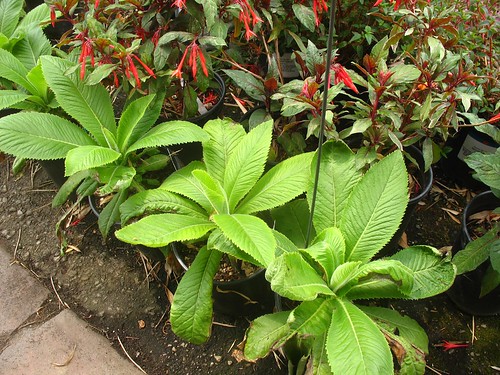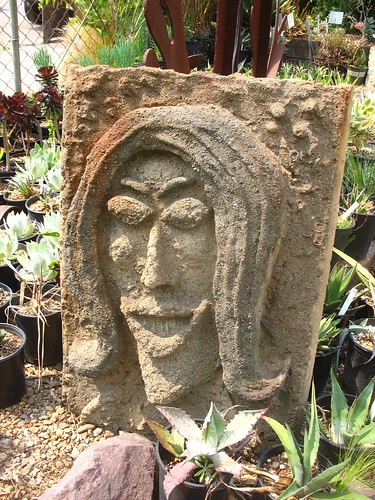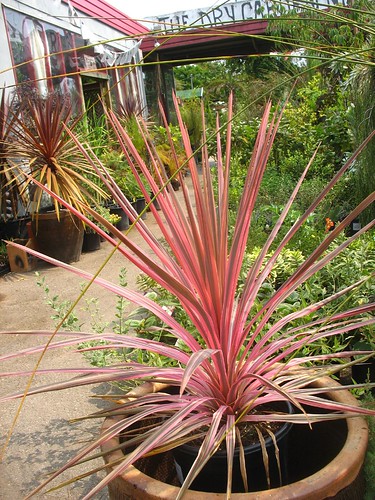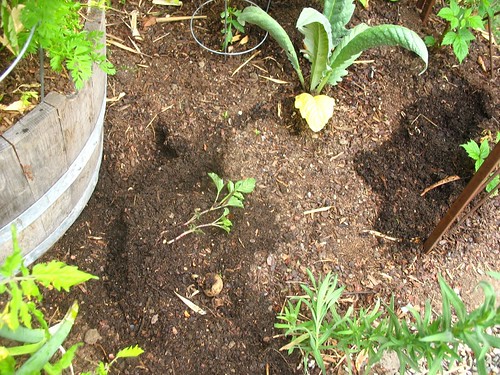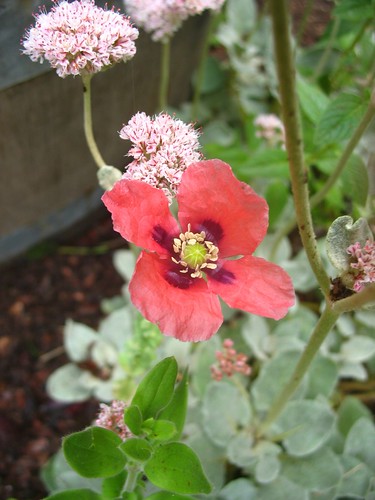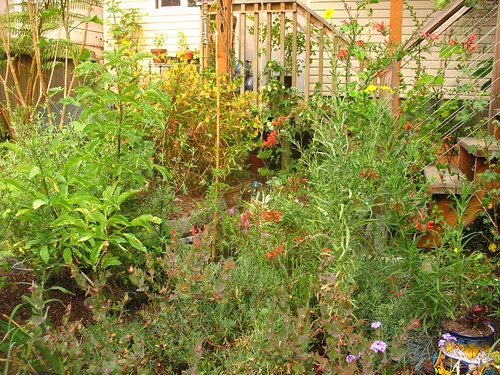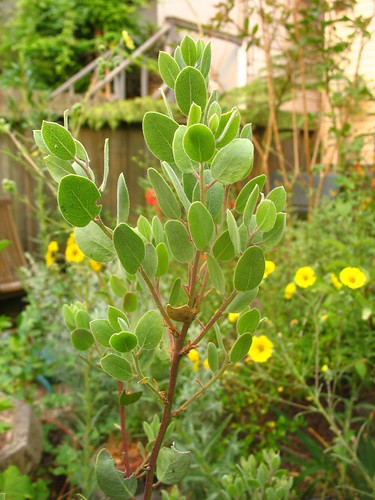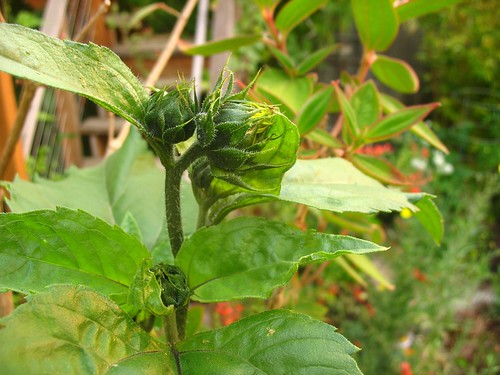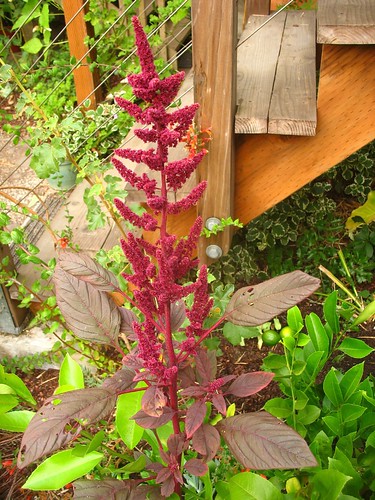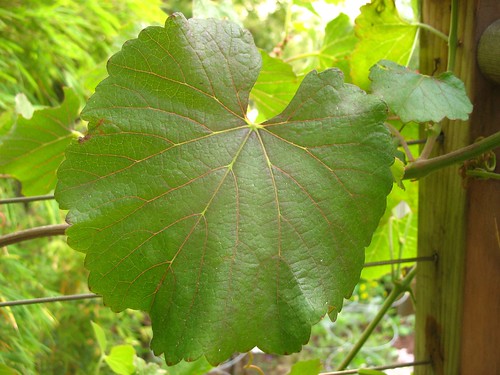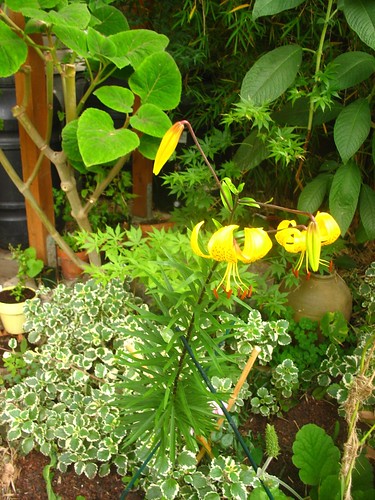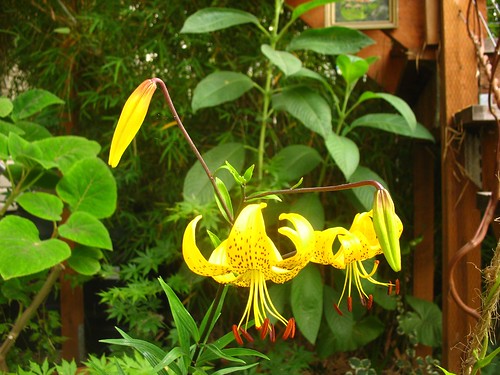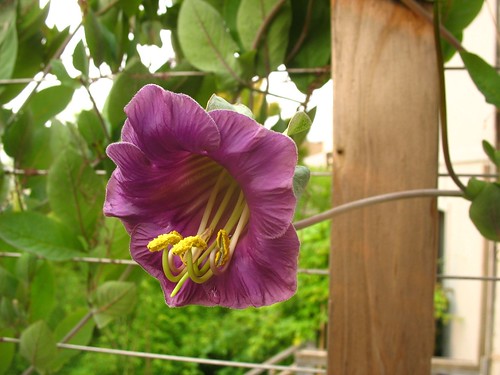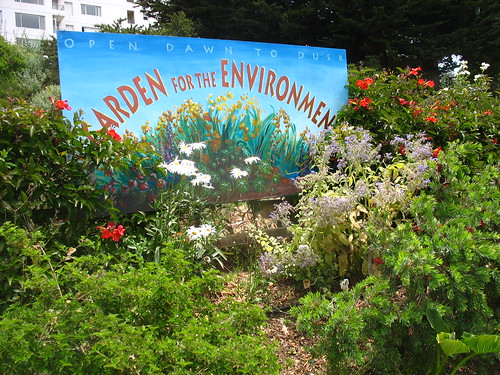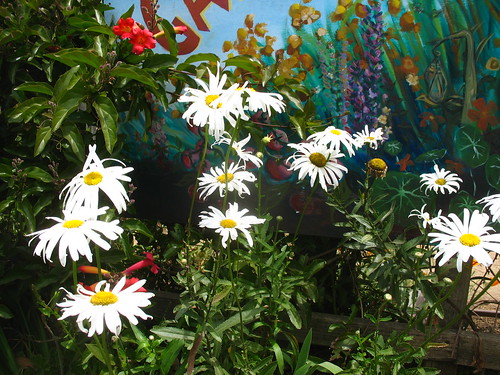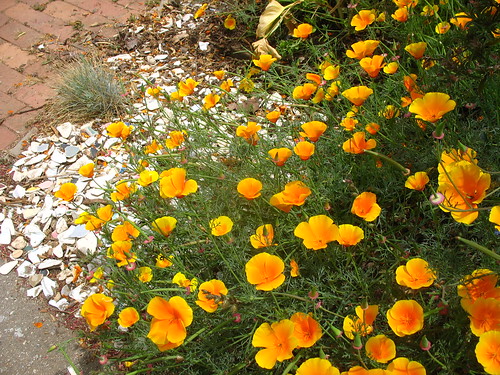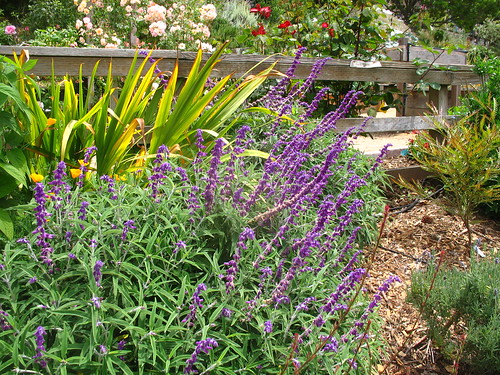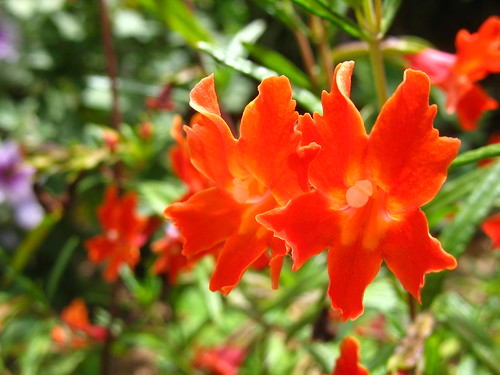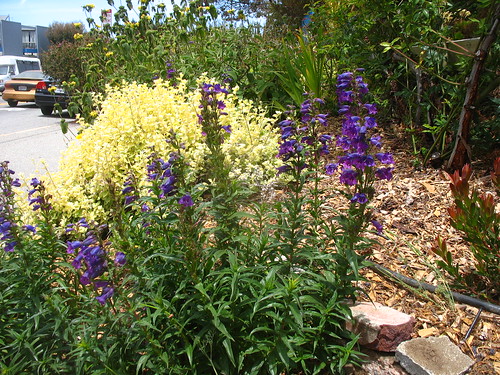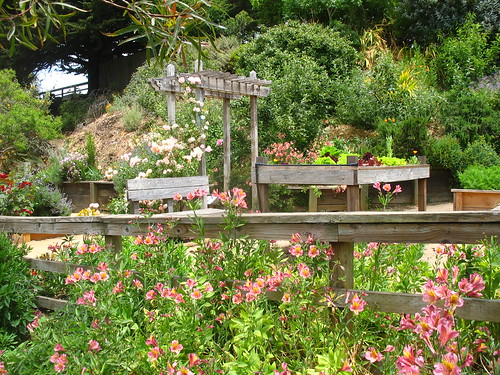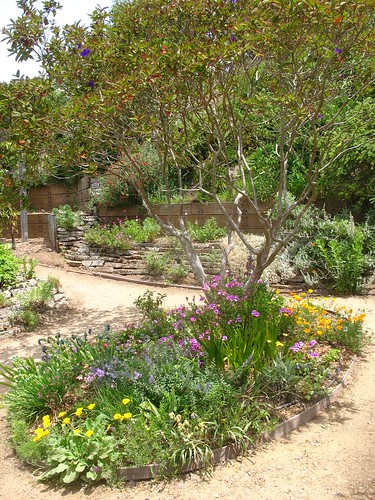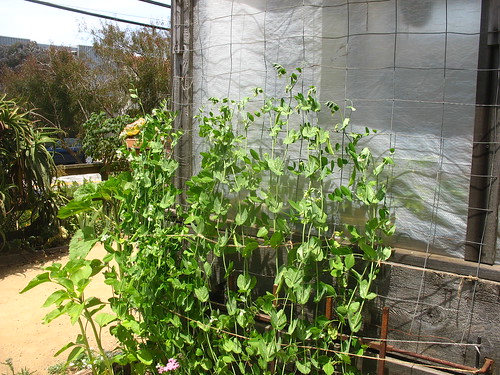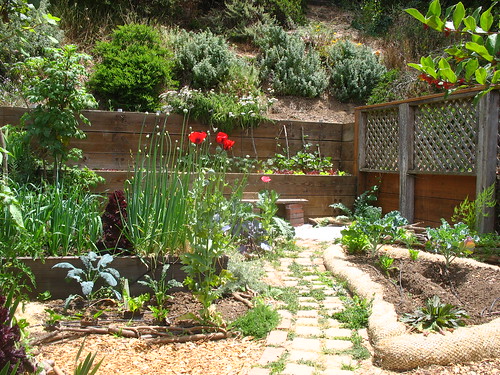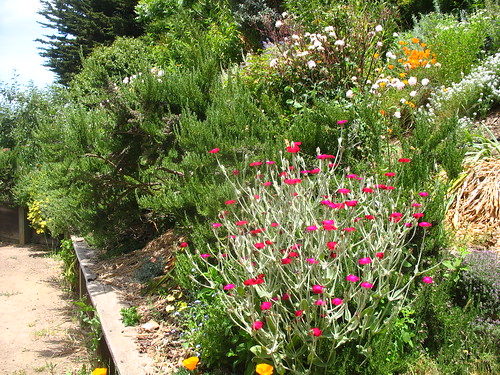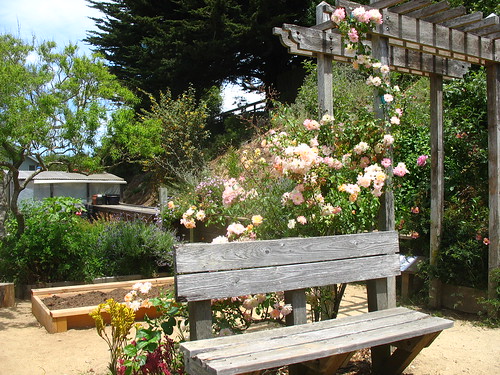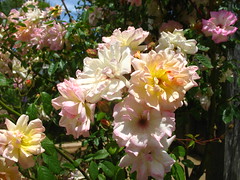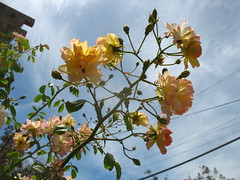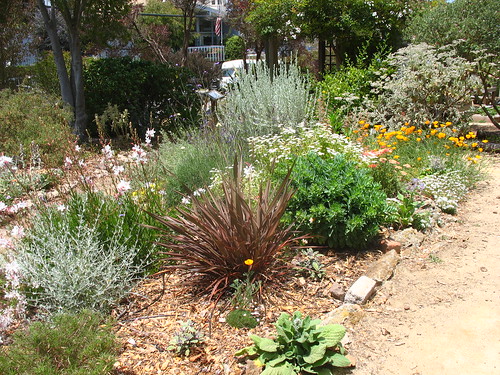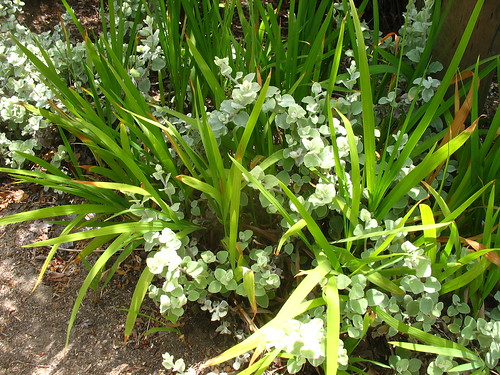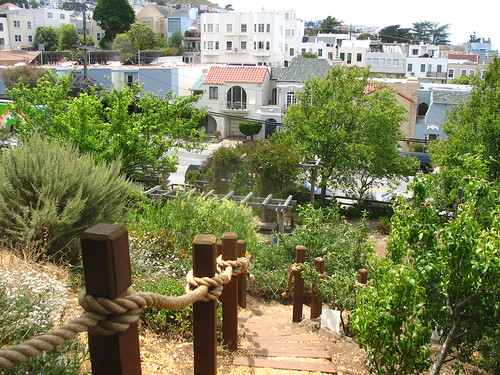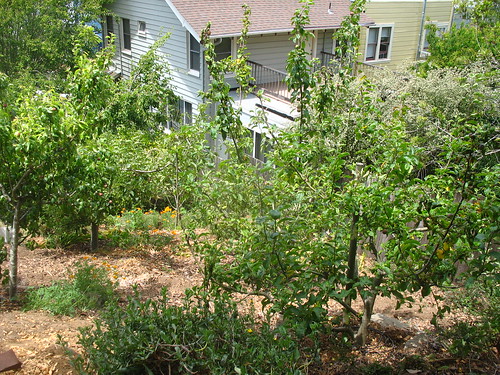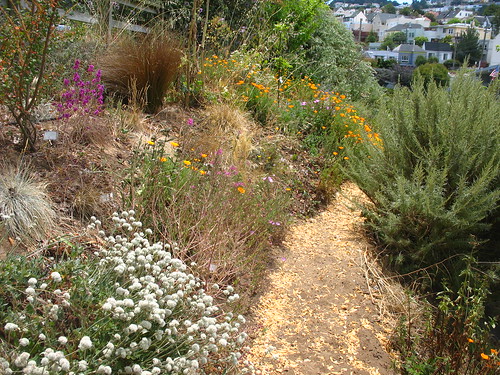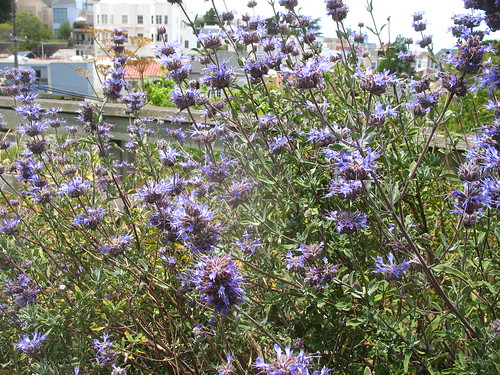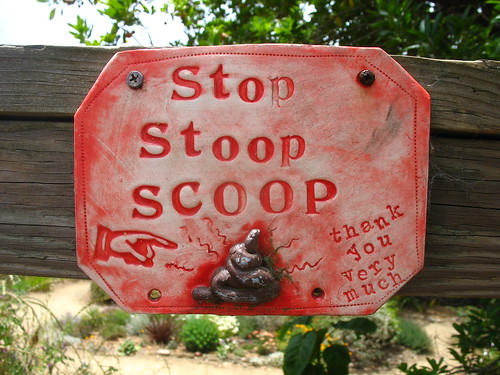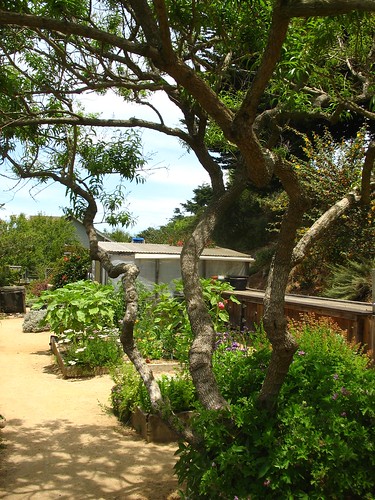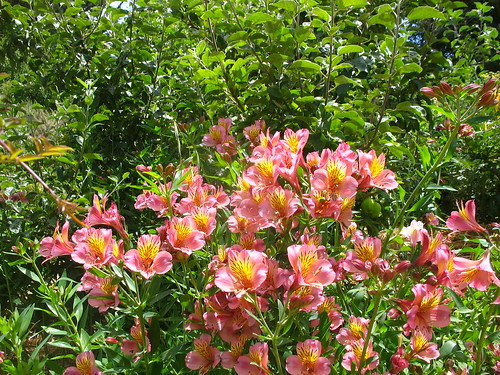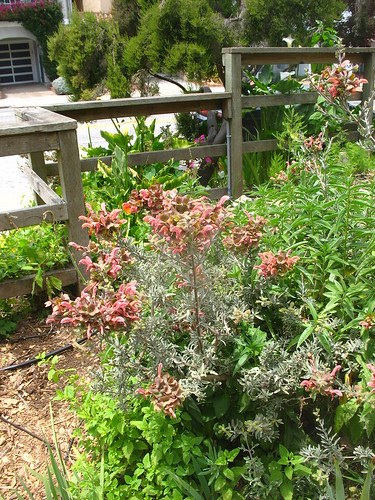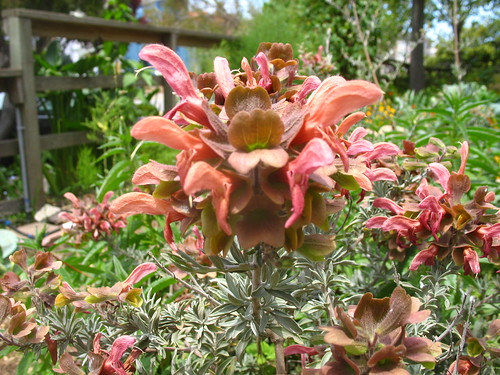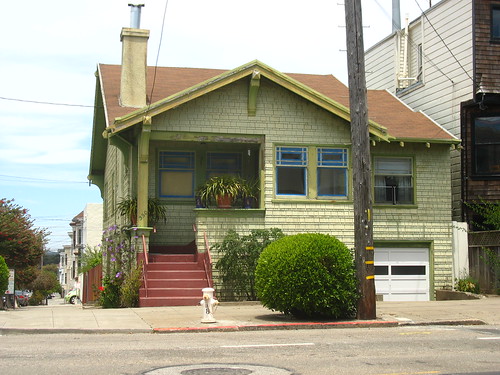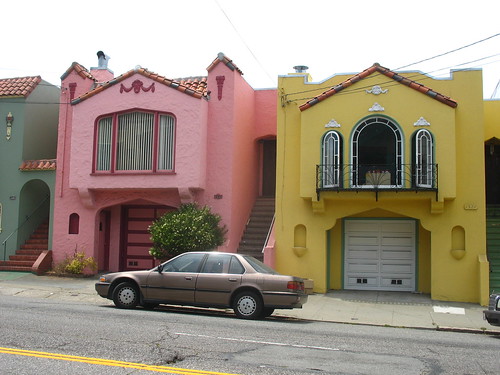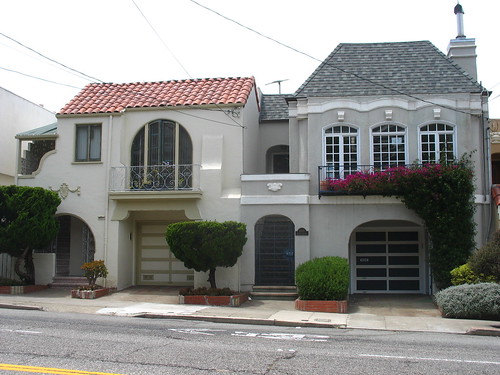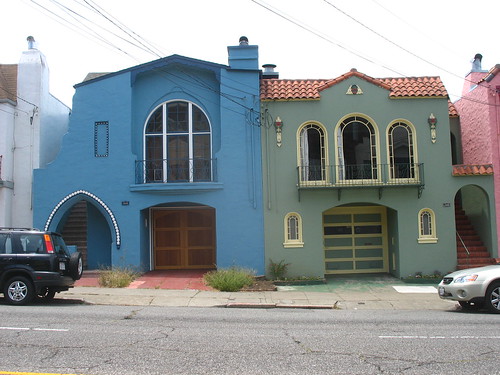III. Color (
cont'd)
Think of the dull colors first--the grays and gray-greens, silvers, and even the dark purples. Then add the flower color--like scattered cushions amongst the furniture.
Oakleaf hydrangea works equally well in both hot and cool borders, in all seasons.
Annual hibiscus-family plant with purple foliage?
Dark red foliage (e.g.,
Berberis thunbergii) makes green foliage look "fuller and lusher".
Ostrich fern under torch azalea = nice.
You want to walk
through the color in a garden--not walk next to it..
Don't become obsessive about detail when thinking about color. More important to stay focused on the whole picture not just a few plants.
IV. The Useful Garden (appearances by Anna Pavord and Rosemary Verey)Many styles have evolved over the centuries; medicinal, food, decoratives, etc.
Think of vegetable plants as foliage plants.
Grow flowers in your vegetable garden, but don't grow vegetables in your flower garden.
Let some lettuces go to seed. They turn in to nice miniature tree-like plants.
Rosemary Verey does not agree that box harbors slugs.
Vegetables need the richest soils; much richer than flower gardens.
V. The Smaller Garden120 feet by 120 feet! That's not small! People have warped ideas about what small is.
Use large-leaf plants.
Grow annuals in large pots. Large pots are "more sensible" than small pots in the small garden.
Do a few things well rather than a lot of things less well.
Focus on simplicity and repetition of form.
Steven Anderton appears!--He's one of favorite garden writers. House interrupts him and cuts him off and she's driving me crazy.
Use a few materials and make them go a long away.
Focus on variation over variety. Use the same thing different ways instead of using many different things.
We err in the small garden by having too many ideas. [I think that's true, but it's worth it to try out many ideas to see which ones you like, and over time, reduce those ideas to the best ones.]
Feel empowered to make a completely new garden every year.
VI. The Country Garden--"as much a style as a garden location".Brambles quickly colonize untended hedges in England.
Country gardens should be linked with the landscape, and express its spirit. Use native plants at the perimeter of a country garden. Keep the exotics close to home.
Ireland has more temperate weather than England? Same latitude as Newfoundland, but the Gulf Stream "makes all the difference". Ireland very similar to PNW? Which seems pretty miserable, so England must be awful.
Color theme: blues, mauves, silvers, magentas, pinks; no strong reds or yellows.
Moving from sunlight to shadow and back again, "one of the most important things about gardening".
Plan a garden like a good dinner party; Let complicated plantings give way to simple areas to cool you down between areas of complicated plantings.
A rare, pleasing combination of red + yellow: dahlia + inula.
Link to the golds and browns of the harvest fields with the colors of your country garden. Need yellow, golden, brown flowers in fall.
Verbascum + feverfew = "abundant and flowing".
"
Buddleja alternifolia is among the prettiest of butterfly bushes."
Relaxed looks require high maintenance.
Lettuces + sweet peas + opium poppies.
Keep color separate from the outer world in a country garden.
VII. Design BasicsLots of plants repeated "all the time" gives formal feeling, but also helps to make things appear more natural.
Use pergolas and uprights to create essential areas of shadow when the garden is young.
Don't let everything be revealed too soon.
Fountains and waterfalls can hide and moderate urban noise.
Amazing 25-ft-tall yew pyramids at
Athelhampton, in Dorset, planted in the 1890s.
We all make mistakes as gardeners. Document them.
Principles of garden design only provide the foundation for your own personal style. Learn the principles, forget them, and do your own thing. (Like grammar.)
Link to Part 1.
